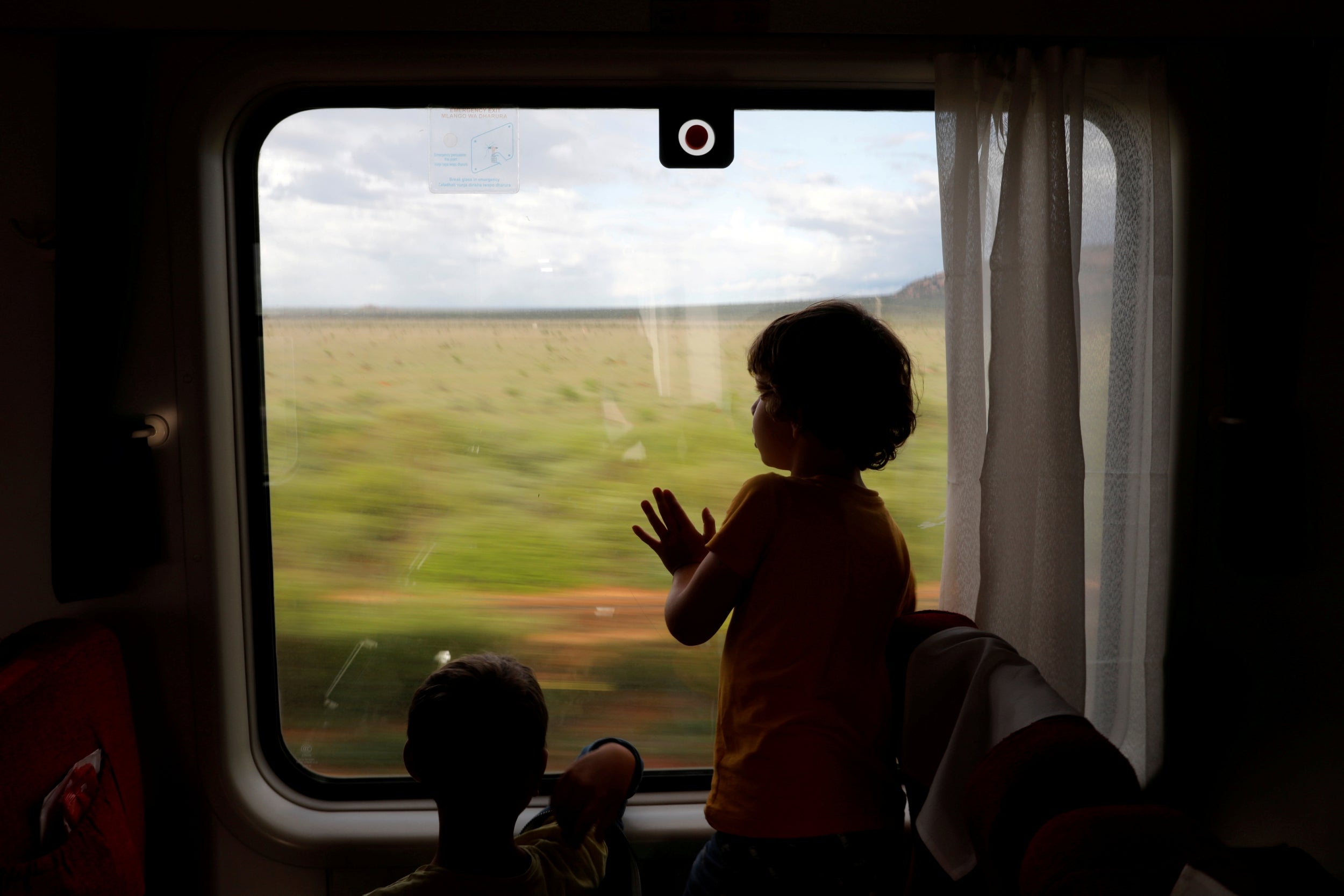Is China’s new rail system leaving small-town Kenya behind?
Two hours from Nairobi, a derelict train station is but a blur from the view of the new high-speed service as it whizzes past without stopping
Your support helps us to tell the story
From reproductive rights to climate change to Big Tech, The Independent is on the ground when the story is developing. Whether it's investigating the financials of Elon Musk's pro-Trump PAC or producing our latest documentary, 'The A Word', which shines a light on the American women fighting for reproductive rights, we know how important it is to parse out the facts from the messaging.
At such a critical moment in US history, we need reporters on the ground. Your donation allows us to keep sending journalists to speak to both sides of the story.
The Independent is trusted by Americans across the entire political spectrum. And unlike many other quality news outlets, we choose not to lock Americans out of our reporting and analysis with paywalls. We believe quality journalism should be available to everyone, paid for by those who can afford it.
Your support makes all the difference.The soporific buzz of bees fills the abandoned train station at Kiu, a two-hour drive from Kenya‘s capital Nairobi. Rusting rail sleepers lie on the grass outside. A new Chinese-built rail track lies about 500m away from the old colonial-era railway station, which closed in 2012. The new high-speed trains thunder through without stopping; Kiu is just a dusty blur glimpsed through the window.
Residents of this eastern Kenya town serving 6,000 people depended on the old station and railway to get to work, or the nearest hospitals. Travelling by road is a slow and costly alternative. The new £2.5bn railway, which opened in 2017, is part of China‘s Belt and Road Initiative – a multitrillion-dollar series of infrastructure projects upgrading land and maritime trade routes between China and Europe, Asia and Africa.
The new railway sliced travel times in half for passengers and cargo travelling between the capital Nairobi and the port city of Mombasa. The non-express service takes just over four hours to make six stops but only runs once a day, a steep reduction from the 46 stops of the old service that ran twice a day.
“This new railway is just for the rich. We do not benefit,” says Thomas Mutevu, a welder in Kiu. He used to commute to work in Nairobi by train every day. But now the train no longer stops, he has stopped commuting. It is too far and expensive by road. Other Kiu residents who work in Nairobi now only come home at weekends, he adds.
State-run Kenya Railways said the new line has boosted local travel. Passengers surged to 1.765 million in the year to June 2019, up from 1.239 million in the year to June 2018, because people who used to travel by road or air now opt for the train. Cargo was up to five million tons last year, although some businesses complain they are being forced to use the new line.
The new rail sliced Emily Katembua’s farm in half. Although she was compensated, she struggles to get to the market without the train. “The government should put a station here so we can benefit since we are traders who need to travel and sell our produce,” she says, surrounded by goats and sheep.
Residents must now pay about 500 shillings (£3.78) to get there by motorbike and minibus, five times what it used to cost on the old rail, they said. Taxis are only for emergencies – they cost 10,000 shillings (£75.50), almost a month’s wages for a labourer.

Some want the old line revived as an attraction. It was dubbed “the Lunatic Express” when British colonialists built it more than a century ago, because it cost the lives of thousands of construction workers from British India and was considered a huge waste of British taxpayers’ money.
“It should actually be a steam train so you can actually see the smoke,” says Mohammed Hersi, the chair of the Kenya Tourism Federation, a private sector lobby. “That would be something special.”
Reporting by Duncan Miriri, Reuters
Join our commenting forum
Join thought-provoking conversations, follow other Independent readers and see their replies
0Comments